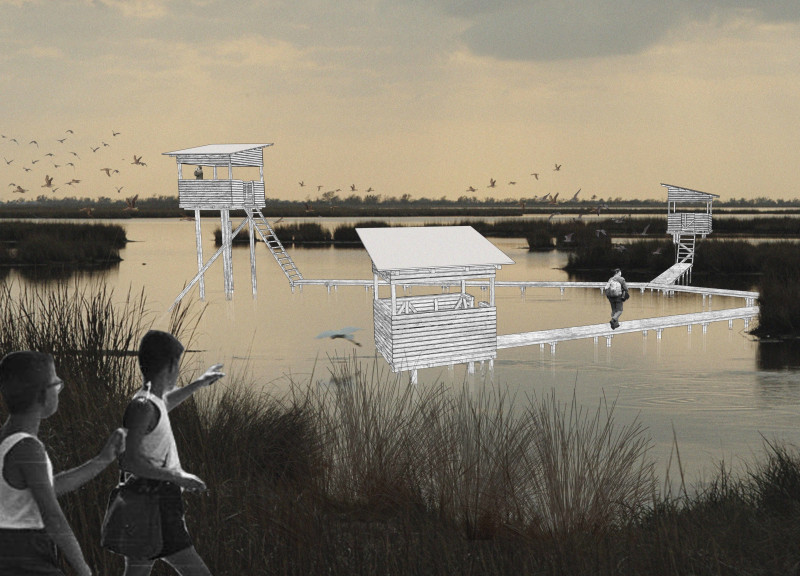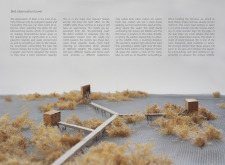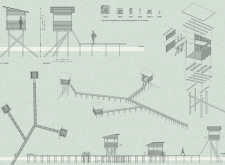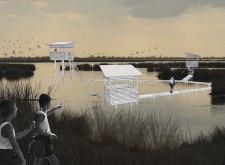5 key facts about this project
### Overview
The Bird Observation Tower is situated near a lake in Latvia, strategically designed to enhance birdwatching experiences while minimizing human impact on local wildlife. The project integrates thoughtfully into the natural landscape, facilitating a respectful interaction between visitors and the environment. The layout includes three observation towers at varying heights, each offering distinct perspectives of the surrounding habitat while encouraging exploration along paths that connect the towers.
### Spatial Strategy
The spatial arrangement consists of elevated platforms linked by unobtrusive footpaths. The three observation towers cater to diverse viewing needs: the first is positioned close to the water, providing an intimate perspective; the second, set among reeds, allows for discreet observation; and the tallest tower offers an expansive view of the lake and its ecosystem. This configuration enables users to engage actively with the environment through exploration and varying sightlines, fostering a deeper connection with the natural world.
### Materiality and Structural Composition
The design extensively employs locally sourced wood, selected for its sustainability and aesthetic appeal, effectively blending the structures with their surroundings. Complementary materials such as strategically placed glass facilitate panoramic views, while metal fastenings ensure long-term durability. The tower frameworks are constructed from simple wooden supports, minimizing ecological disruption. Approximately 12 m² of diverse cross-section wood components are utilized throughout the project, highlighting a commitment to both structural integrity and environmental harmony.





















































